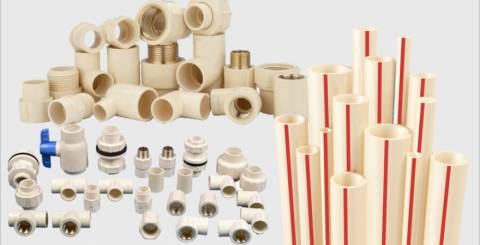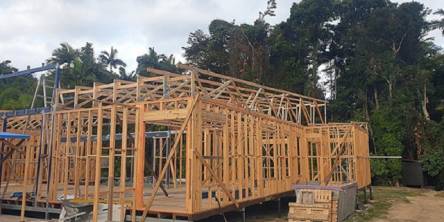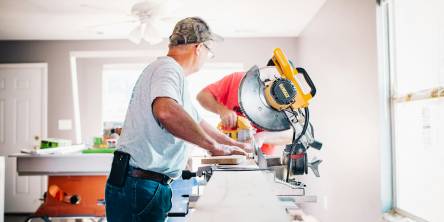Selecting the Pipelines Prepared for the Plumbing of Cold and Hot Water in Winters

During winters, we all prepare ourselves well for the chilly weather. But we never realise the damage that winters can cause to the traditional piping systems that are being used. In winters, the pipes not only have to suffer the flow of cold water from the tanks, but they’re also subjected to the heated water flow from the geyser and other water heating devices.
Due to these reasons, it becomes necessary to think before installing piping systems. There are many options available in the market for separate purposes, and each one has its own pros and cons. This gives us a wide variety to choose from but also requires knowledge of piping systems.
Galvanised Pipes
The traditional pipes that were used in residential areas and commercial buildings are not proven effective for plumbing with hold and cold waters. These are the galvanised pipes; they’re not highly corrosion-resistant, nor can they be used for the transportation of potable water. Moreover, extremely hot and cold water can damage the pipes from inside. The galvanised pipes can also form clogs and leach the water. Due to so many drawbacks, they are not preferred for plumbing nowadays.
Copper Pipes
Copper pipes can be a good option for plumbing in winters. They can withstand extreme hot and cold temperatures. Apart from this, they are very reliable and can last for more than 50 years. Copper pipes do not leak or corrode, nor can they pollute water as bacteria cannot invade these pipes. They can be recycled and are easily available. The few drawbacks it has include the high cost and other environmental concerns regarding the copper mining projects.
Brass pipes
Brass pipes were used as a cheaper alternative to copper pipes. The problem with these pipes was that brass contained lead, and it is one of the biggest health hazards known to man. Later the industry shifted to lead-free brass, but these brass pipes are expensive.
PEX pipes
Cross-Linked Polyethylene pipes, also known as PEX, are one of the favourites when it comes to hot water plumbing. These pipes are resistant to rust and corrosion. They can last forever until they don’t break somehow. These pipes are very flexible and easy to install. They do not require any soldering. It can perfectly suit the winter season as it can withstand extreme hot and cold temperatures. Also, they’re more cost-effective than copper pipes. The PEX pipes do have some major drawbacks, like they cannot be used outdoors as they can be damaged by sunlight. Some of these pipes can also cause bad taste and odour in water.
CPVC Pipes
CPVC (Chlorinated Polyvinyl Chloride) pipes are made from the same element as PVC (Polyvinyl Chloride) pipes, but CPVC pipes are chlorinated, and thus, they can be used for transporting hot and cold water without being damaged. If both of these materials are compared cost-wise, then CPVC is more expensive, but there are numerous benefits. The CPVC pipes are available in two sizes, Nominal Pipe Size (NPS) and Copper Tubing Size (CTS), whereas the PVC pipe manufacturers provide the pipes only in one size, i.e., NPS.
The CPVC pipes also provide many other benefits like long life as it does not corrode or rust, and it can handle the high pressure of water. The pipe is easy to move and install as it is lightweight, costs less than other metal materials. But the one clear advantage over CPVC over other piping materials is that it can withstand high temperatures. These pipes can easily take up to 200-degree Fahrenheit temperature. Thus, it is also used by water tank manufacturers. But, the only disadvantage of this material is that it can break down as a result of prolonged exposure to sunlight.
Now that we are equipped with enough knowledge about the types of plumbing pipes, their purposes, and their advantages and demerits, we can choose pipes for the chilling winter. Do keep these pros and cons in mind the next time you pick a pipe.
Similar Articles
AS 1684 is vital for ensuring the safety, stability, and compliance of timber-framed buildings in Australia. However, many professionals make mistakes when applying this standard, which can compromise the quality and integrity of a project.
When people think about insulation, they often associate it with keeping homes warm in the winter and cool in the summer. While temperature regulation is one of its primary functions, insulation offers a range of additional benefits that many homeowners overlook
Boost home energy efficiency with top renovation tips—insulation, smart appliances, HVAC upgrades & more. Save money & reduce environmental impact!
Have you ever looked up at your roof and wondered if it’s still in tip-top shape? Are you asking yourself whether those small cracks or worn-out tiles could lead to bigger problems down the line? If so, you’ve come to the right place.
Smart home remodel tips: splurge on countertops & flooring, save on decor & lighting. Balance budget & luxury for a stylish, functional space!
Discover the rising trend of roller shades in modern homes! Essential window coverings for a sleek, stylish look. Transform your space now!
Transform your outdoor space with stone veneer! Discover benefits, installation tips, maintenance, and creative ideas for enhancing curb appeal and durability.
Marble is a luxury and high-end material that imparts a sense of timelessness to any living space. From a white Carrara marble table to an intricately veined dark marble surface, its elegance and sophistication make it an incredible focal point in your living space.
What do you do with old quilt covers after you’ve used and abused them for several years? Well, for starters, you’ve got to shop for some brand-new king size quilt covers, and then you need to roll your sleeves up for some fun DIY projects









